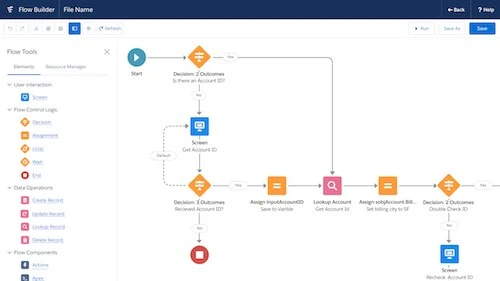In this comprehensive guide, we will delve into the best practices for Salesforce integration, empowering you to maximize the benefits and outrank other websites in Google search results.
1. Planning for Salesforce Integration
Before diving into the integration process, careful planning is crucial. Consider the following key aspects:
1.1. Define Integration Objectives
Clearly outline your integration objectives to align Salesforce with your business goals. Identify specific areas where integration can improve efficiency, data accuracy, and overall performance.
1.2. Assess System Requirements
Evaluate your existing systems and identify any gaps or limitations that may hinder the integration process. Understanding your system requirements will help you choose the most suitable integration methods.
1.3. Create a Project Roadmap
Develop a project roadmap that outlines the integration timeline, milestones, and responsibilities. This roadmap will ensure a structured and organized approach throughout the integration process.
2. Selecting the Right Integration Method
Salesforce provides various integration methods to accommodate diverse business needs. Selecting the appropriate method is vital for a successful integration. Consider the following options:
2.1. Point-to-Point Integration
Point-to-point integration establishes a direct connection between Salesforce and another system. It is ideal for simple integrations with limited data exchange requirements. However, this method can become complex and challenging to maintain as the number of integrated systems increases.
2.2. Middleware Integration
Middleware acts as a central hub that connects Salesforce with multiple systems. It offers scalability, flexibility, and reduces complexity by eliminating the need for point-to-point connections. Consider leveraging middleware solutions like [Recommended Middleware Solution] to simplify your integration landscape.
3. Data Integration and Synchronization
Seamless data integration is the backbone of an effective Salesforce integration. Pay close attention to the following data integration best practices:
3.1. Data Mapping and Transformation
Map and transform data between Salesforce and other systems to ensure compatibility and consistency. Define clear rules for data conversion, handling exceptions, and maintaining data integrity throughout the integration process.
3.2. Real-Time Data Synchronization
Implement real-time data synchronization between Salesforce and integrated systems to ensure up-to-date information across all platforms. This facilitates accurate reporting, reduces errors, and enhances the overall user experience.
3.3. Data Cleansing and Deduplication
Prioritize data cleansing and deduplication efforts to eliminate duplicates and inconsistencies. Regularly monitor and clean your data to maintain data quality and reliability within Salesforce.
4. Security and Access Control
Maintaining data security and access control is paramount when integrating Salesforce. Safeguard your sensitive information with these recommended practices:
4.1. Implement Robust Authentication
Enforce strong password policies, two-factor authentication, and IP restrictions to ensure secure access to Salesforce. Consider leveraging Salesforce Identity to manage user authentication across integrated systems.
4.2. Role-Based Security
Leverage Salesforce’s role-based security model to define access privileges for different user roles. Grant access only to the data and functionality required for each role, minimizing the risk of unauthorized access.
5. Monitoring and Maintenance
Continuous monitoring and proactive maintenance are essential to ensure the long-term success of your Salesforce integration. Consider the following practices:
5.1. Monitoring Performance Metrics
Regularly monitor integration performance metrics, such as response times, data throughput, and error rates. Identify potential bottlenelenecks or issues and take proactive measures to optimize integration efficiency.
5.2. Error Handling and Logging
Implement robust error handling mechanisms and logging procedures to capture and track integration errors. Analyzing error logs enables swift resolution of issues and minimizes downtime.
5.3. Regular Testing and Validation
Conduct regular testing and validation to ensure the seamless functioning of your integration. Test data synchronization, data mapping, and other critical integration components to identify and address any anomalies promptly.
In conclusion, Salesforce integration can significantly enhance your business operations, streamline processes, and drive overall success. By following the best practices outlined in this comprehensive guide, you will be well-equipped to outrank other websites in Google search results. Remember to carefully plan your integration, select the appropriate integration method, prioritize data integration and synchronization, ensure security and access control, and establish effective monitoring and maintenance procedures.
graph LR
A[Planning for Salesforce Integration] -- Assess System Requirements --> B
A -- Define Integration Objectives --> B
A -- Create a Project Roadmap --> B
B -- Selecting the Right Integration Method --> C
C -- Point-to-Point Integration --> D
C -- Middleware Integration --> D
D[Data Integration and Synchronization] -- Data Mapping and Transformation --> E
D -- Real-Time Data Synchronization --> E
D -- Data Cleansing and Deduplication --> E
E -- Implement Robust Authentication --> F
E -- Role-Based Security --> F
F[Monitoring and Maintenance] -- Monitoring Performance Metrics --> G
F -- Error Handling and Logging --> G
F -- Regular Testing and Validation --> G




